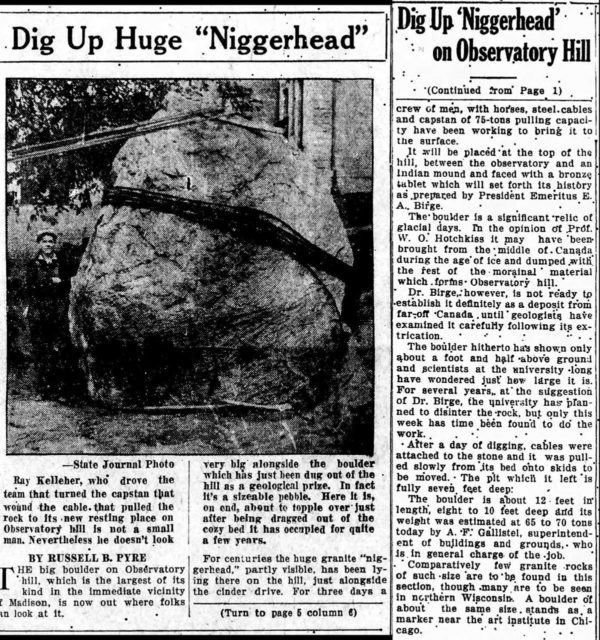The University of Wisconsin-Madison will move forward with plans to remove a 70-ton boulder from campus after two student organizations, including the Wisconsin Black Student Union, deemed it a racist symbol.
The boulder, officially known as Chamberlin Rock, sits at Observatory Hill, and was named after geologist and then-University President Thomas Crowder Chamberlin, in 1926. It is among the largest glacial erratics to be found in southern Wisconsin, and was dug out of Observatory Hill.

In 1925, a Wisconsin State Journal article referred to the boulder as a “n–gerhead rock,” a common term used to describe large, dark rocks at the time.
LINK, a group supporting the Black Lives Matter movement, has also called for the rock to be removed.
Over the summer, the Wisconsin Black Student Union called for the rock to be removed. President Nalah McWhorter said the boulder symbolizes the injustices Black students attending a predominately white university face.
The use of the term “n–gerhead” to describe large dark rocks appears to have stopped being used in the 1950s.
“Dig Up Huge N–gerhead,” the title of the 1925 article reads.

“This rock and the history that it holds is a representation of oppression, of discrimination and of hurt,” WBSU treasurer Nzinga Acosta told the Badger Herald in September. “And so in the removal of it, it’s a show that that type of behavior and that type of history is not going to be tolerated.”
The article is the only known instance of the term being used to describe the rock, which was officially named after Chamberlain a year after the article was published.
Last week, the Campus Planning Committee voted unanimously in favor of recommending to Chancellor Rebecca Blank that the boulder be removed.
The rock could be removed from campus and relocated, buried in Observatory Hill where it was found, or completely destroyed.
The cost to remove the rock could range between $30,000 and $70,000.
The university will need permission from the Wisconsin Historical Society before it can begin removing the boulder since it is located near an effigy mound.
After the rock is removed the Black Student Union wants to reclaim the space. “So it becomes a way to celebrate instead of having it as an empty space reminding us of what it once was,” WBSU President McWhorter said.


